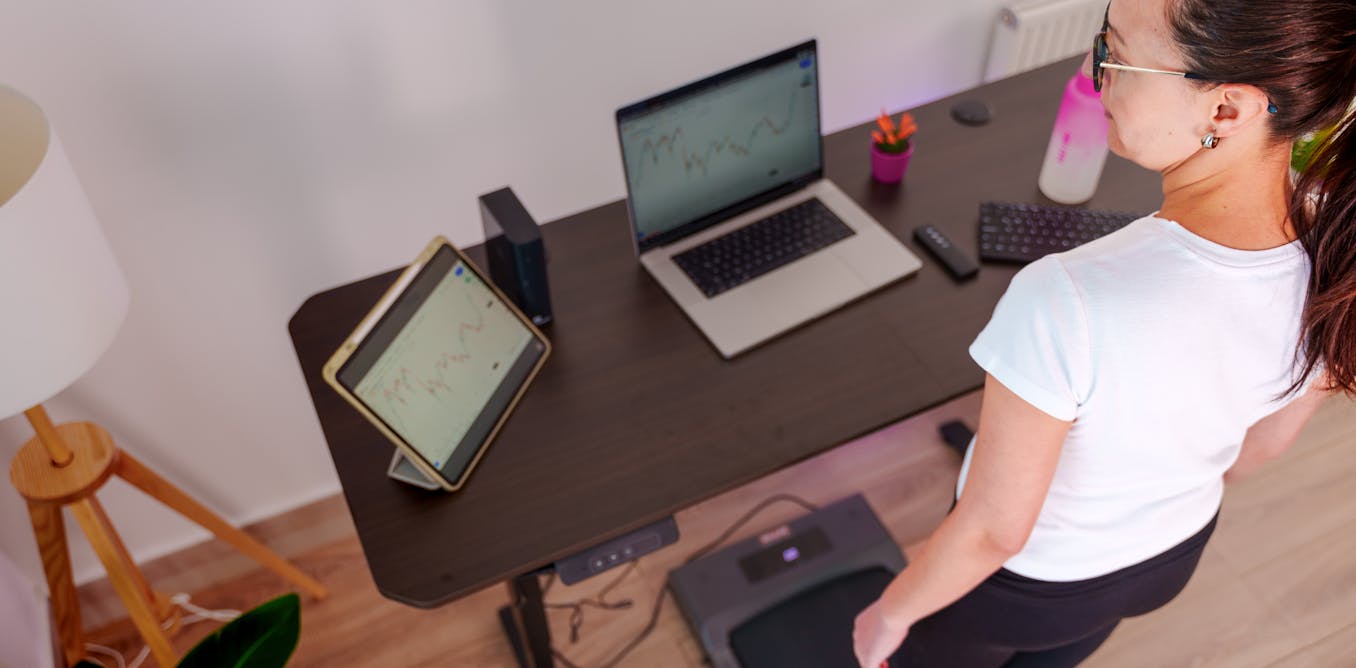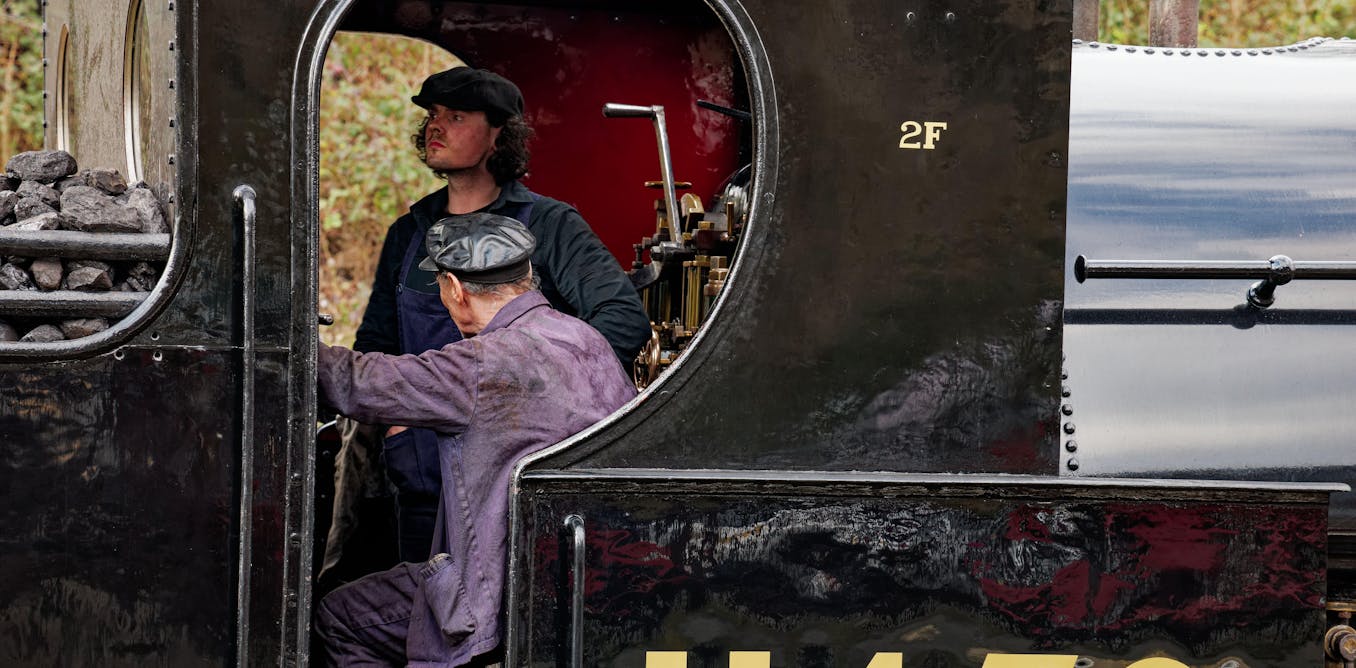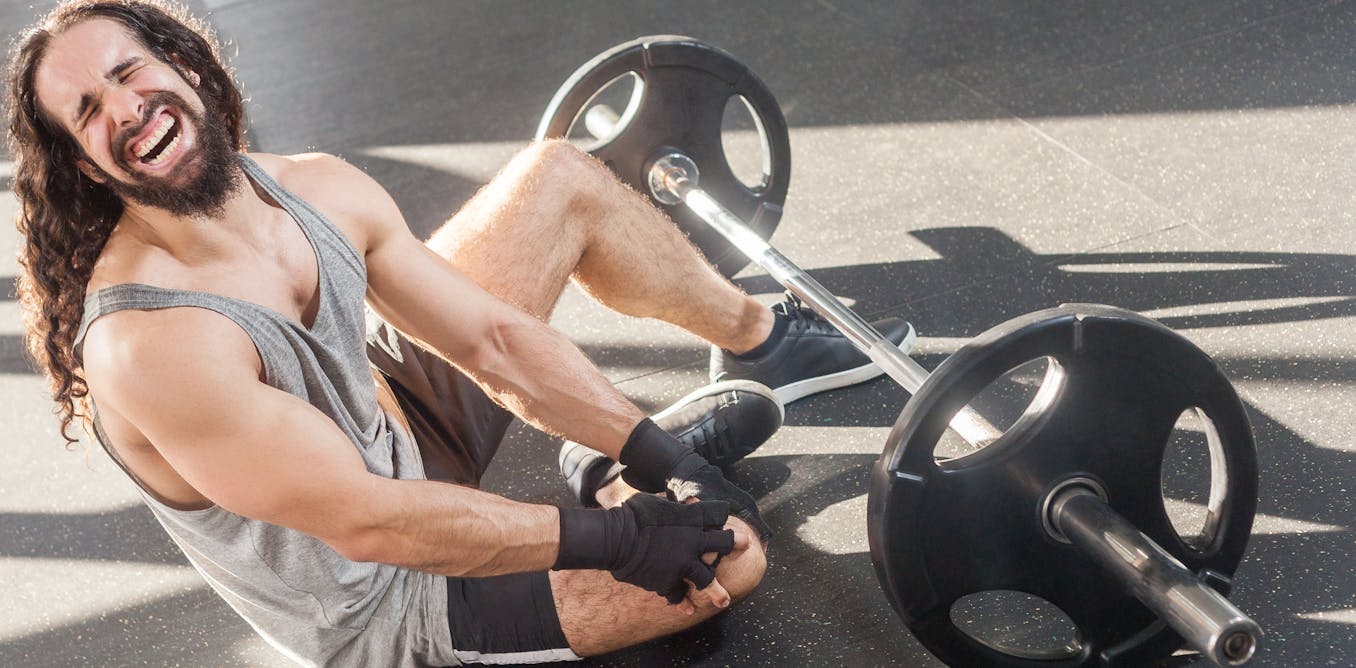Meet Apollo, the real-life robot that is bringing us one step closer to a future where robots take over all the tasks we don’t enjoy and leave us with the awesome jobs. The focus for electronic engineers is to create one robot that can do thousands of different things, making adaptable, general-purpose robots, like Apollo, a reality in the workplace. As humans, our most valuable resource is time, and the hope is that robots like Apollo can take on the not-so-awesome jobs, freeing up our time for the things we do want to do.
Apollo’s origins can be traced back to the Fukushima disaster, where robots were needed to avert a broader catastrophe in unsafe conditions for humans. This sparked the DARPA Robotics Challenge, bringing together the best thinking in robotics to develop robots capable of responding to natural disasters and working in human environments.
Apptronik, the makers of Apollo, are focused on building versatile, general-purpose robots with the ability to deal with obstacles, maneuver in the human world, and interact with the physical world. The challenge lies in getting robots to balance, walk, and manipulate objects like humans, making adaptability a key focus in the development of robots like Apollo.
As humanoid robots like Apollo become more mainstream, they have the potential to change the way we live and work, and perhaps even open the door to new possibilities and opportunities in the future.
Watch the video by Freethink
Video Transcript
– This is Apollo: a general-purpose robot coming to a workplace near you. Robots are not new, but what about robots that can work side by side with you in almost any environment? Adaptable, general-purpose robots are here and they’re not quite done yet, but the things we used to think of as impossible
Are now just an engineering challenge. – We’re building the next generation of mobile robots. The focus for electronic is to build one robot that can do thousands of different things. – Why do this? Well, if robots can take all of the not awesome jobs,
Then all that’s left for humans will be awesome jobs- at least that’s the hope. – As humans, our most valuable resource is time, and I think a part of our evolution as a species, we can now build for ourselves a tool that can do all the things that we don’t want to do
So that we can spend time the way that we do want to do. – Most of the engineering effort and design effort is in getting it to do these tasks reliably- and at the same time not scaring the crap out of everyone around them. – What? That’s the coolest thing ever.
– We’ve had these moments in human history where we have to rethink everything, and I think we’re at another one of those inflection points. – The robots are already here, and when this becomes mainstream, it will change everything. This is “Hard Reset,” a series about rebuilding our world from scratch.
Hey, this is Nick from “Hard Reset.” I’m actually on the floor of CES, which is a great place to hop on some truly sketchy public Wi-Fi networks, which is something you should always do with caution by the way. And one of the ways you can do that more safely is
With NordVPN, our sponsor for this episode of “Hard Reset.” I’m actually using NordVPN on my mobile device right now, which means all my data is encrypted, my privacy is protected, and that’s important to me, because I go to a lot of strange places on the internet in the course of researching this show.
There’s a perfectly legitimate reason that my search history covers how to compost a human body, but I’m not sure anyone’s interested in hearing that. Anyway, if you wanna try out NordVPN, go to nordvpn.com/hardreset and you’ll get four free months if you sign up for a two-year plan.
And Nord has a 30-day money back guarantee. So if you find you don’t like privacy, you can just cancel it at no risk. We’re happy to talk about NordVPN because frankly, they’re paying us, but also because we do like the service- it’s very fast, it’s super seamless and it even works
On very sketchy convention center Wi-Fi connections or any of the other weird places I wind up needing to connect to the internet. Also using NordVPN lets me get around regional restrictions. For example, I can connect through a server pretty much anywhere in the world
So that I can access information that might not be available where I happen to be. So head on over to nordvpn.com/hardreset and try it out. It’s fast, it’s affordable, and it’s totally seamless and it can help keep you safe online. All right, let’s get back to the episode of “Hard Reset.”
More and more humanoid robots are coming to the market, and the promise of general-purpose robotics finally seems like it’s here, or at least close. A humanoid robot might not be the best for any given job, like say opening a door, but it’s probably the most adaptable robot
Designed for a world designed around humans. That’s important for when you want a robot to open a door, and then operate a human-sized forklift, and then deliver packages in an office with stairs and escalators and golden retrievers. That adaptability is super important in emergency situations too.
And if there’s an origin story to Apollo, it’s the Fukushima reactor mode. Yeah, I didn’t see that one coming either. – The Fukushima disaster happened, the reactors were melting down and they needed to get to them avert a broader catastrophe. It was unsafe to put humans in harm’s way.
The folks that were looking at this basically said, “Hey, calling all roboticists, we need a robot that can get into where it needs to go so that we can avert this crisis.” And the challenge at the time was that there was a number of things that the robot would’ve had to do
To get to the melted down reactors. So it had to go downstairs, it had to open doors, it had to turn valves, a whole range of things, and at the time, robots could only do one of those things, and that was a big wake-up call for the robotics industry as a whole.
So on the heels of that, DARPA came out with the DARPA Robotics Challenge and the goal was to build what they called the “superhero robot.” This robot that could respond to natural disasters and could work in a human environment and do all the things that would be required in a natural disaster.
– The DARPA Robotics Challenge brought a lot of the best thinking in robotics to life. For example, Atlas, the robot you know and love from those Boston Dynamics videos, where someone hits it with a two-by-four. That guy got his start from the DARPA Challenge. Another robot that came out of the DARPA challenge
Was Valkyrie made by NASA. This is Nick Paine, and he was part of the Valkyrie team. – Basically, the first time that I saw Valkyrie and met Nick, I thought, “This is it- his is the next big thing. I could really make an impact in changing the way
That we live and work in the future.” – Our focus is on building versatile, general-purpose robots that can do a wide range of different tasks. – Jeff and Nick are the co-founders of Apptronik, the makers of this humanoid robot, Apollo. – Early on, we are focused on building robots for the unstructured world.
This is different from the structured world that you see robots in factories, they have robots that are welding or picking up pieces and putting them in different locations. These are position-controlled robots, so they need to be very repeatable and precise. – Industrial robots need to be precise,
But they don’t deal well when you throw them a curve ball. But out in the real world, there’s nothing but curve balls. So the question suddenly changes from how precise is your robot to how adaptable is your robot? – It’s important to think about robots that can collide
With the environment, that can be safe, and they can be used in a wide range of different applications, and you need to fundamentally change the way you design a robot for these types of applications. – The honors. You wanna do it? – Sure. – All right.
– Is this just practice for the uprising? Robots in the human world will need to deal with obstacles and slippery floors and people bumping into them. We do this all the time and take for granted how easy it is for us. Back! But teaching robots to do this from scratch is hard work.
– This robot was an example of a starting point for learning how to get robots to balance and to walk like humans do. You need to be able to solve the mobility piece, how do you move from point A to point B, and how do you solve the manipulation problem
Like interacting with the physical world? – This one’s adorable, by the way. Can I touch? – Sure. – I kind of picture it just sitting here kicking its legs back and forth – And one of the things you can notice with this robot is that it’s really easy to move the joints around.
– Yeah, no, that’s true. – That’s a property that we call ‘back drivability;’ the absence of friction and inertia in a robot’s limb. – If these are hydraulic, that would be a no go. – Right. – One important difference between this robot and others you might be familiar with-
I’m looking at you T-800- is that there’s no hydraulics. Hydraulics are super powerful and strong, but they’re also not very human-friendly. – Hydraulics are high-pressure systems with, you know, if they spring a leak, they can cause severe damage to people. So they’re very unsafe to be around.
They’re also very powerful. So they’re just- some of these fundamental kind of safety considerations about them. – Instead of using hydraulics, Apollo uses all-electric motors, or what robot makers would call “actuators” or “servos.” – With the electric actuators, they’re much more safe to be around. Hydraulics are very power hungry,
Whereas electric actuation is very power efficient. So you can build systems that have much more battery life than a hydraulic counterpart. – They also require a lot less maintenance and upkeep than a hydraulic system. And the focus for electronic is this idea of human-centered design
Because we want them to be safe for us to be around. In order for a humanoid robot to fully realize its potential, it’s gotta be in the real world operating with and around people. – The robots being developed now will be able to adapt to our environment
And they’ll be safe enough for us to work around them. The only question is whether or not we’ll want to work around them. – The process of working with argo is really a dream come true for us. The roots of Apptronik were in academia and research,
But working with argo allowed us to basically put that into practice with world-class designers. – This is argodesign, a studio in Austin, Texas. They helped to design Apollo and make sure it was a robot that people could easily work and interact with. For the designers here,
This was a dream project for them too. – I was like, if my 6-year-old self could see what I’m doing and then I could go working on a robot, it’d be like, “What? Like that’s the coolest thing ever.” – Yeah, there’s a bunch of like sci-fi nerds here
And this just kind of embodied the perfect project. – I never would’ve guessed from the scale model of Jabba the Hutt’s party barge on this desk over here. – Everybody kind of wanted to work on this one. Yeah. – For a product designer, there’s a lot more to this
Than just designing a cool-looking robot. The design of any product conveys a huge amount of information for the user. – When you’re talking about comparing it to how we physically encounter other people, a device like this, it’s a really careful dance, let’s say. It’s not just what does the robot look like,
But how does it work, how do you interact with it, what kind of story is it telling. You want to convey some personality, but as neutrally as possible, but not too much where it’s telling a story that’s not really appropriate. – So I think one of the key things
That’s gonna be really important for the adoption of robotics as a whole is people’s trust for these systems. What does it feel like to work around a system? How do you sort of split the difference between a robot that is friendly but a robot that’s also highly capable? – That’s especially difficult
Because even though this is an emerging technology, it’s also already really familiar to us in some ways. – When you think about precedent with robots, there’s a ton of precedent, just not real. This is one of the most covered spaces in terms of fantasy and science fiction.
We’ve seen robots our whole lives, just never in reality. – There’s all kinds of already just preexisting language around sci-fi and robots. So we had one of these boards that was just robots on a scale of friendly to aggressive, from humanoid to non-humanoid, and just helped us align with Apptronik.
– I think from a product standpoint, as we’re sort of looking at it holistically, we thought about it as a sort of levels or distances of interaction. – One source of inspiration for the design was a little surprising. – Some of those early discussions when we were looking at
Those image boards and just the high-level conversation about do we want like a skinned, fully synthetic encapsulated humanoid robot or is it more functional? And the conversation kept going back to motorcycle design of having like a strong form factor, but also exposing parts of the engine in some of the mechanics.
– We found that motorbikes really conveyed just a muscular taut design quality to it. And so this thing is not fragile, it’s not kind of a rattly C-3PO like device, but something you could have confidence in. And so we brought some of that language to the table.
– Motorcycle designs aren’t just nice to look at. They also guide you on the correct way to interact with the vehicle. Like where you sit, where to put your hands and more importantly, where not to put your hands. – A lot of this stuff is beautiful from a technical perspective,
And dangerous from an access if you can get to it. – How did you guys approach the head? – This was just a really interesting element to make the head hollow. – Other competitors didn’t even have a head. And so to have a headless thing was like,
We can’t go that route ’cause that’s weird. And it became really interesting to think about what if we make the acknowledgement of a hollow space in the head? It doesn’t have a brain, it doesn’t think. It doesn’t have intelligence the way we’re used to understanding it with each other.
– When you encounter the thing, this machine that looks like it might be thinking, we need to tell you a story that it’s, “No, it’s just a machine.” In the original design work, we tried different face shapes and one kind of looked more like a primate;
Is the cheeks tuck in and it’s really designed around the underlying screen inside there. But that ends up looking kind of like a digital monkey shape and it’s not really a story we want to tell. It sort of just becomes the ape face, as opposed to a neutral face.
Is it mean looking? Is it happy looking, kind of goofy? No, you don’t want either one of those. You want this a kind of a positive, neutral disposition. – There was a lot of work in the eyes and the mouth to find a balance that was doing the things
That it needed to do and making it approachable, but without being too human to the point where you start to hit that uncanny valley issue. The mouth position as well, like if I moved it literally like two centimeters down, it suddenly looked very silly. If I moved it a little too high up,
It looked like more devious. You had to get like just the right spot. And then I tried like a hundred different curves for the smile to get the one that was like not a creepy smile and not a dumb smile and not like, you know, a straight line.
This is both charming and a little bit spooky. This is another good example of the subtlety of small changes though, because your initial version of this, the head was tilted just a little bit more and it was exponentially more frightening looking, right? – As a culture, we’ve been telling stories
About robots or things like them for a long time. Many of those stories are not nice. I’m looking at you again, T-800, and you Ultron, and you ED-209, and you Johnny 5! Ugh. So how do we as a society get past this cultural baggage?
– What we noticed is those stories quickly go away when you start encountering this thing. When you start seeing it work and move, you get quickly past all that science fiction and it becomes a little silly to even talk about those ideas of robots getting outta control. They’re very simple machines
In respect to what we understand in science fiction. They’re very purposeful, narrowly focused trucks. It’s a walking truck. It’s its job. So I don’t think people will carry that baggage for very long. – So, what will it mean for humans as robots like Apollo, the walking trucks that they are,
Start to join the workforce? – The big question I think that everyone has on their mind is: Why do something like this? Why spend your time on solving a problem like this? In our lab, we have a big sign that says: “Robots for humans.”
And this is a big part of our ethos at Apptronik. Humans are tool-makers. And when you pair humans with a tool, that’s really where we accelerate. – So, picture a scenario where these general-purpose robots are everywhere and sophisticated enough to take on the vast majority of physical labor.
What will that mean for humans? – I think one thing that some people fear is that as these robots come into the picture, what does it mean to be human anymore? Well, I think that it increases the value of what it means to be human.
And the question is: What should a human do? If a machine can do it, what should a human do? – The point of “Hard Reset” is to think about how we’d start from scratch. So how would we start over if we had robots like this at our disposal?
We have no idea what it’s like to live in a world where the hard labor has been eliminated from our lives. No, no, wait, what am I talking about? Lots of people know exactly what that’s like. We call them very wealthy people. – What did Galileo, Newton, and Darwin all have in common?
They were all wealthy and they all had time to spend it the way that they wanted to spend it. So if we free people up from this cycle of working jobs that they don’t like doing and doing something because somebody’s gotta do it, then how many more Newtons, Darwins could we create?
– Of course, just because we don’t have to do these sorts of tasks anymore doesn’t mean we can’t do them anymore. We have cars, but people still ride horses. We have Ikea, but people still hand-carve furniture. Automation just means we can do these things on our own terms instead of out of necessity.
– What if we gave people time to think about and contemplate our existence and think about where we’re going next- what could that create? I think it’s the way that we improve the way we live here on Earth, how we get to the Moon, Mars and beyond.
– I feel like this one evokes like it’s a little sad or forlorn, this one feels a little bit grumpy. This one feels like it wants to turn me inside out. This one desperate to know where Sarah Connor is. – Yeah.
Video “Meet Apollo, the real-life robot who wants to give you more free time | Hard Reset” was uploaded on 02/01/2024 to Youtube Channel Freethink

The post ““Introducing Apollo: The Robot Designed to Give You More Free Time” by GretAi was published on 02/17/2024 by news.gretai.com


































